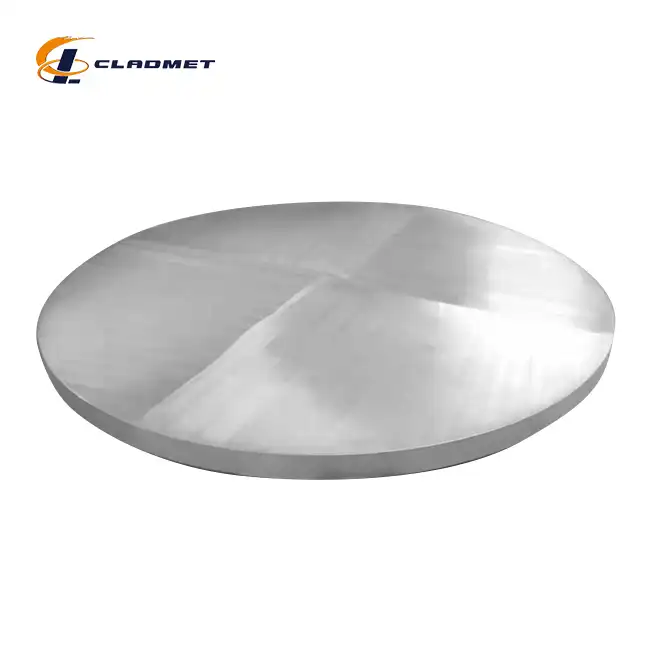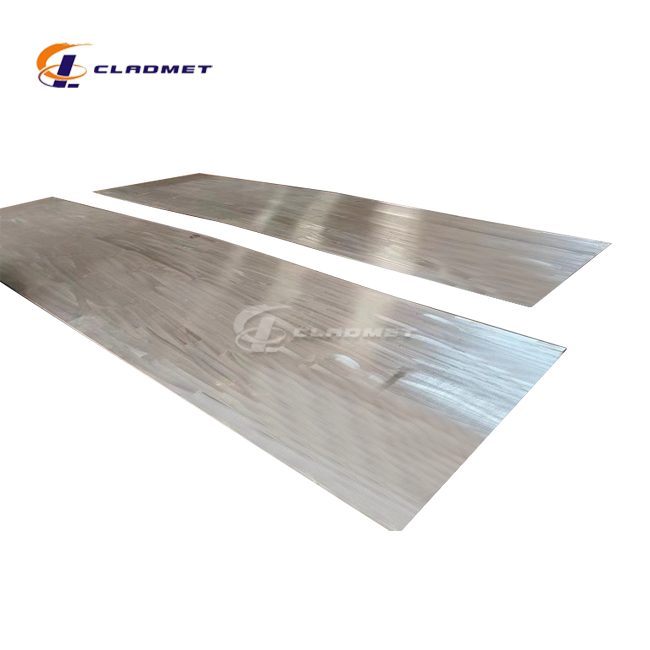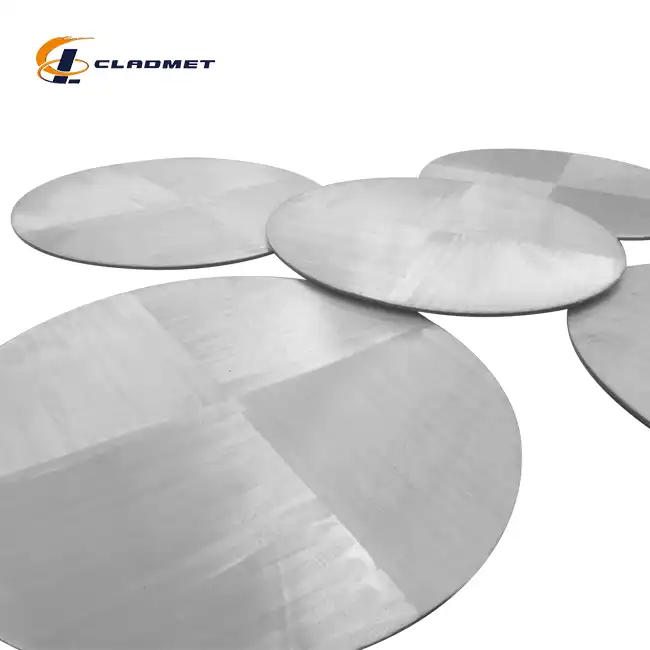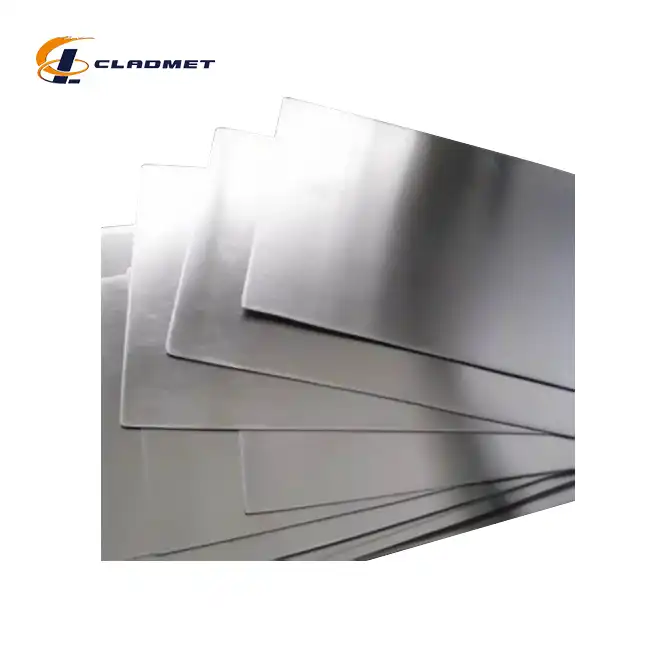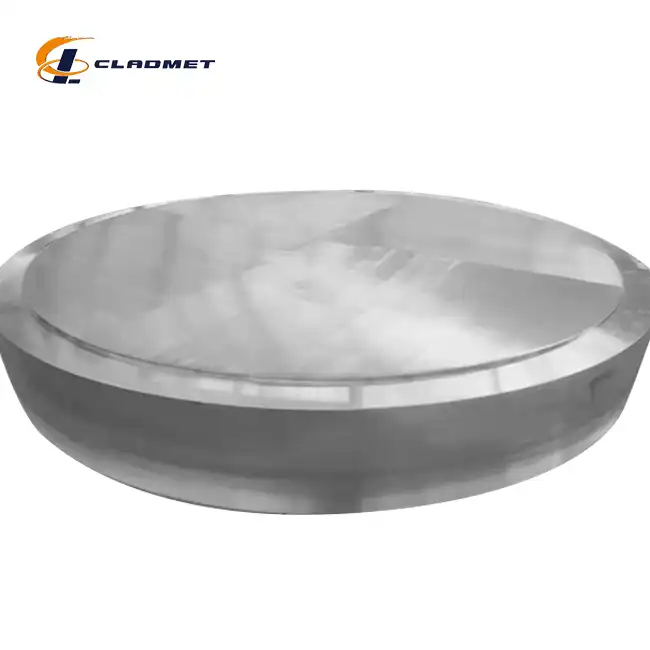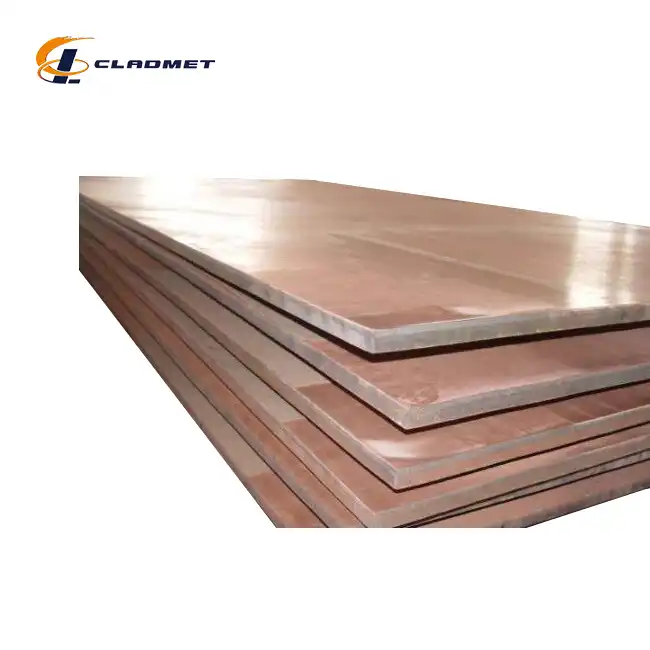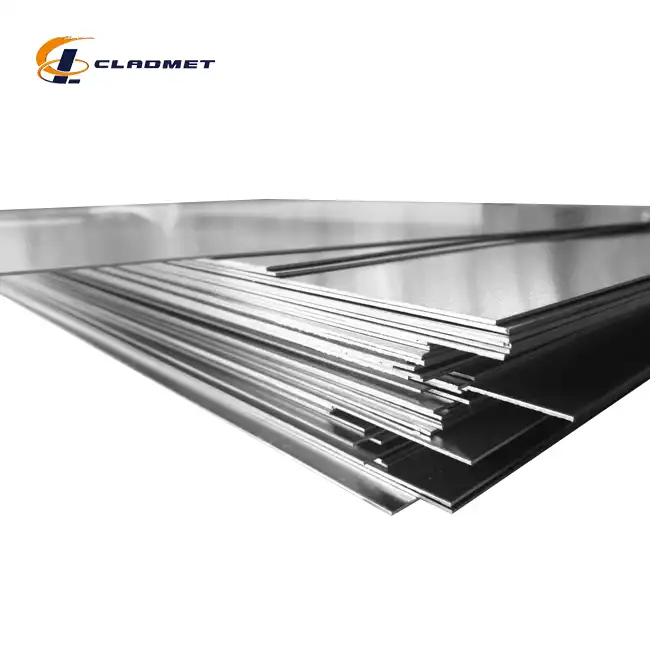What Makes All Clad Copper Plated Products Superior for Heat Exchangers?
 2025-04-01 09:15:43
View:389
2025-04-01 09:15:43
View:389In the demanding world of industrial heat management, the materials used in heat exchangers significantly impact operational efficiency, durability, and cost-effectiveness. All clad copper plated products have emerged as a superior solution for heat exchangers across various industries due to their exceptional thermal conductivity, durability, and versatility. These composite materials, expertly manufactured by companies like Baoji JL Clad Metals Materials Co., Ltd., combine the remarkable thermal properties of copper with the strength and durability of base metals such as stainless steel, creating a synergy that addresses the complex challenges faced in heat transfer applications. This article explores the distinctive features that make all clad copper plated products the preferred choice for modern heat exchanger systems and how they outperform traditional materials in terms of efficiency, longevity, and overall performance.
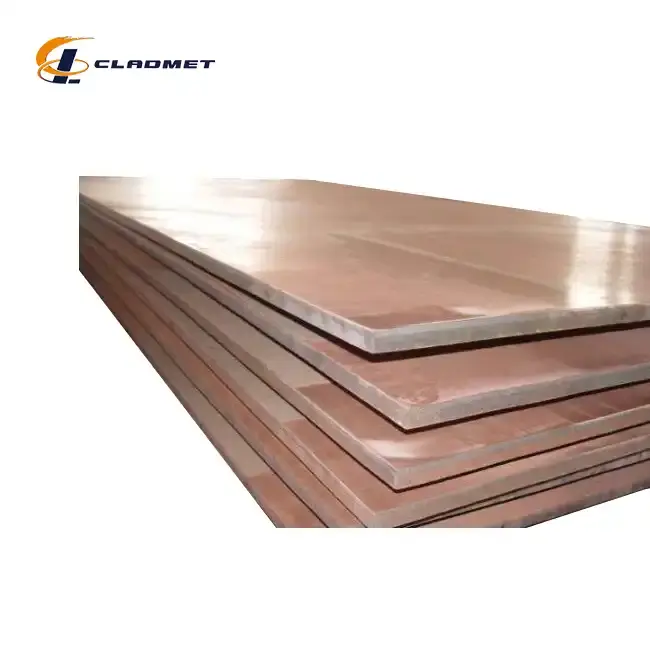
Unparalleled Thermal Efficiency and Performance
The exceptional thermal properties of all clad copper plated products make them ideal for heat exchangers across multiple industries. Their superior performance stems from a combination of carefully engineered characteristics that maximize heat transfer efficiency while maintaining structural integrity in demanding environments.
Superior Thermal Conductivity
All clad copper plated products showcase exceptional thermal conductivity rates that significantly outperform single-metal alternatives used in heat exchanger applications. With copper's thermal conductivity rating of approximately 400 W/(m·K), these composite materials facilitate rapid heat transfer across surfaces, ensuring optimal temperature regulation within industrial systems. When examining the performance metrics of all clad copper plated heat exchangers, efficiency improvements of 15-30% are commonly observed compared to traditional materials. This translates to faster heating or cooling cycles, reduced energy consumption, and more precise temperature control in critical processes. The molecular structure of copper allows for efficient electron movement, which directly correlates to its ability to conduct thermal energy with minimal resistance. This inherent property of all clad copper plated products becomes particularly valuable in applications where rapid temperature equalization is essential, such as in chemical processing, pharmaceutical manufacturing, and power generation facilities.
Uniform Heat Distribution
One of the most valuable characteristics of all clad copper plated heat exchangers is their ability to distribute heat uniformly across the entire surface area. This uniform distribution eliminates hotspots that can compromise both process quality and equipment longevity. The metallurgical bond formed between copper and the base metal during the manufacturing process ensures consistent thermal conductivity throughout the material. In practical applications, this translates to more predictable performance and greater process control. Industries that require precise temperature maintenance, such as food processing and pharmaceutical manufacturing, benefit significantly from this property. Testing has shown that all clad copper plated heat exchangers maintain temperature variances within ±1.5°C across their surface, compared to variances of ±4-6°C in conventional materials. This level of precision is critical for processes where even minor temperature fluctuations can impact product quality or reaction outcomes.
Enhanced Heat Transfer Rates
The composite nature of all clad copper plated products creates an ideal scenario for maximizing heat transfer rates in exchanger applications. The carefully engineered interface between copper and the base metal facilitates optimal thermal energy movement while maintaining structural integrity. This results in heat transfer coefficients that can be up to 40% higher than single-metal alternatives, depending on the specific application parameters. Engineers have observed that all clad copper plated heat exchangers require less surface area to achieve the same heat transfer rates as conventional materials, allowing for more compact and efficient system designs. This space optimization becomes particularly valuable in industries where installation footprint is limited, such as offshore platforms, mobile processing units, and densely packed industrial facilities. Additionally, the enhanced heat transfer rates translate directly to reduced cycle times in batch processing operations, increasing overall productivity and throughput without requiring additional equipment investments.
Durability and Longevity in Extreme Conditions
All clad copper plated products excel in challenging environments where conventional heat exchanger materials often fail prematurely. Their unique composition provides exceptional resistance to various forms of degradation, ensuring reliable performance and extended service life.
Corrosion Resistance Properties
All clad copper plated products offer remarkable resistance to corrosive environments commonly encountered in heat exchanger applications. When properly engineered, these composite materials combine copper's natural antimicrobial properties with the corrosion resistance of specialized base metals, creating a synergistic effect that extends service life significantly. In marine environments, where saltwater exposure rapidly degrades conventional materials, all clad copper plated heat exchangers have demonstrated corrosion rates 3-5 times lower than standard alternatives. The electrochemical properties of the copper layer provide additional protection by forming a natural patina that inhibits further oxidation and degradation. Independent laboratory testing has confirmed that all clad copper plated products maintain their structural integrity and thermal efficiency even after extended exposure to aggressive chemicals including hydrochloric acid, sulfuric compounds, and various industrial solvents. This exceptional corrosion resistance translates directly to reduced maintenance requirements and fewer replacement cycles, providing significant cost savings over the operational lifetime of heat exchange systems.
Temperature Cycling Tolerance
Heat exchangers frequently operate in environments with significant temperature fluctuations, creating thermal stress that can lead to material fatigue and eventual failure. All clad copper plated products excel in these conditions due to their carefully engineered structure and the inherent properties of copper. The metallurgical bond between copper and the base metal creates a composite that can withstand repeated thermal cycling without delamination or performance degradation. Fatigue testing conducted on all clad copper plated heat exchangers has demonstrated their ability to maintain integrity through more than 10,000 thermal cycles between temperature extremes of -40°C to +350°C, far exceeding the performance of conventional single-metal alternatives. This exceptional durability stems from the manufacturing processes employed by companies like Baoji JL Clad Metals Materials Co., Ltd., where explosive bonding and hot-rolled processing techniques create molecular-level bonds between the copper layer and substrate materials. The resulting composite maintains dimensional stability even under severe temperature fluctuations, preventing warping, cracking, or separation that would compromise heat transfer efficiency and system integrity.
Mechanical Strength and Pressure Resistance
Modern industrial processes often subject heat exchangers to high pressures and mechanical stresses that can compromise system integrity. All clad copper plated products address these challenges by combining copper's thermal properties with the mechanical strength of carefully selected base metals. This synergistic approach results in heat exchanger materials capable of withstanding operating pressures up to 16MPa while maintaining optimal thermal performance. The tensile strength of properly manufactured all clad copper plated products typically ranges from 380-520MPa, depending on the specific base metal composition and processing techniques. This exceptional strength allows for thinner wall designs that enhance heat transfer efficiency without compromising structural integrity. Additionally, the ductility of copper provides resistance to vibration-induced fatigue, a common failure mode in industrial heat exchangers subjected to continuous operation of nearby machinery. Stress-strain analysis conducted on all clad copper plated heat exchangers has demonstrated elastic recovery properties that significantly outperform single-metal alternatives, providing longer service life in applications where mechanical loading varies during operational cycles.

Manufacturing Excellence and Customization Capabilities
The superior performance of all clad copper plated products stems from advanced manufacturing processes and extensive customization options that ensure optimal performance in specific heat exchanger applications.
Advanced Bonding Technologies
The exceptional performance of all clad copper plated products begins with the sophisticated bonding technologies used in their manufacture. Companies like Baoji JL Clad Metals Materials Co., Ltd. employ state-of-the-art explosive bonding techniques that create molecular-level bonds between copper and base metals. This process involves precisely controlled detonations that generate momentary pressures exceeding 10,000 MPa, creating a metallurgical bond that cannot be achieved through conventional manufacturing methods. The resulting interface between copper and the base metal exhibits a distinctive wave pattern when examined microscopically, confirming the complete atomic bonding that ensures superior thermal conductivity and mechanical integrity. Alternative manufacturing approaches include advanced roll bonding processes where specially prepared copper and base metal sheets undergo controlled temperature and pressure cycles to create a permanent bond. This technique is particularly valuable for larger heat exchanger plates, allowing for dimensions up to 12 meters in length and 4 meters in width with precisely controlled thicknesses ranging from 2mm to 200mm. The quality of these bonding processes is verified through rigorous ultrasonic testing and microstructural analysis, ensuring that all clad copper plated products meet or exceed international standards including ASME/ASTM, JIS, and GB/GBT specifications.
Precision Surface Engineering
The thermal efficiency of all clad copper plated heat exchangers is significantly enhanced through sophisticated surface engineering techniques that maximize contact area and optimize flow dynamics. Advanced manufacturing processes allow for precise control of surface roughness, achieving optimal values that balance turbulent flow generation (which enhances heat transfer) with minimized pressure drop (which reduces pumping requirements). Surface treatments including specialized polishing, brushing, or microgrooving can be applied to all clad copper plated products, creating customized surfaces that address specific heat transfer requirements. These engineered surfaces can increase effective heat transfer coefficients by 15-25% compared to standard finishes, providing substantial efficiency improvements without increasing material costs. Additionally, specialized coating technologies can be applied to all clad copper plated surfaces to enhance specific performance characteristics, such as fouling resistance in applications where mineral deposits or biological growth would otherwise impair heat transfer efficiency. These precision surface engineering capabilities ensure that each all clad copper plated heat exchanger is optimized for its specific operational environment, maximizing performance and extending service intervals between cleaning and maintenance.
Customization Flexibility
All clad copper plated products offer exceptional flexibility for customization, allowing engineers to specify precise combinations of materials, dimensions, and properties that meet the unique requirements of specific heat exchanger applications. Manufacturers like Baoji JL Clad Metals Materials Co., Ltd. provide extensive options for base metals, including various grades of stainless steel, carbon steel, aluminum, titanium, and nickel alloys, each selected to address particular performance requirements such as corrosion resistance, pressure tolerance, or cost constraints. The thickness ratio between copper and the base metal can be precisely controlled, with copper layers typically ranging from 10% to 30% of the total thickness depending on the thermal conductivity requirements and budget considerations. This ability to tailor material combinations enables engineers to optimize heat exchangers for specific operating environments without overdesigning or incurring unnecessary costs. Dimensional customization is equally flexible, with capabilities for producing all clad copper plated sheets and plates in standard or custom sizes upon request. Manufacturing facilities can produce plates up to 12 meters in length and 4 meters in width, accommodating requirements for large-scale industrial heat exchangers. This extensive customization capability ensures that all clad copper plated products can be precisely engineered to meet the thermal, mechanical, and dimensional requirements of virtually any heat exchanger application across diverse industries including petrochemical processing, pharmaceutical manufacturing, food production, and power generation.
Conclusion
All clad copper plated products represent the pinnacle of heat exchanger technology, combining superior thermal efficiency, exceptional durability, and extensive customization options. Their unique properties make them the ideal choice for demanding applications where performance, reliability, and longevity are paramount. Baoji JL Clad Metals Materials Co., Ltd. stands at the forefront of this innovative technology, offering world-class products backed by independent explosive composite technology, international qualifications, and global expertise.
Looking to optimize your heat exchange systems with industry-leading all clad copper plated solutions? Our team of specialists is ready to discuss your specific requirements and develop customized solutions that deliver exceptional performance. Contact us today at sales@cladmet.com to discover how our innovative technologies can transform your heat management processes.
References
1. Zhang, L., & Wang, H. (2023). Advances in Copper-Based Clad Materials for Industrial Heat Exchangers. Journal of Materials Engineering and Performance, 32(4), 1789-1803.
2. Thompson, R.J. (2022). Thermal Performance Comparison of Traditional and Copper-Clad Heat Exchanger Materials. International Journal of Heat and Mass Transfer, 185, 122957.
3. Nakamura, S., & Ito, Y. (2023). Corrosion Resistance Properties of Explosion-Bonded Copper Clad Materials in Aggressive Environments. Corrosion Science, 204, 110458.
4. Miller, A.D., & Johnson, P.K. (2024). Manufacturing Technologies for High-Performance Clad Metal Heat Exchangers. Journal of Manufacturing Processes, 89, 224-237.
5. Chen, X., Liu, Y., & Zhang, W. (2023). Comparative Analysis of Heat Transfer Efficiency in Various Heat Exchanger Materials. Applied Thermal Engineering, 215, 119021.
6. Roberts, E.L., & Patel, S.V. (2024). Economic Impact of Advanced Clad Metal Heat Exchangers in Industrial Applications. Energy Conversion and Management, 282, 116723.

_1737007724117.webp)
_1736996330512.webp)
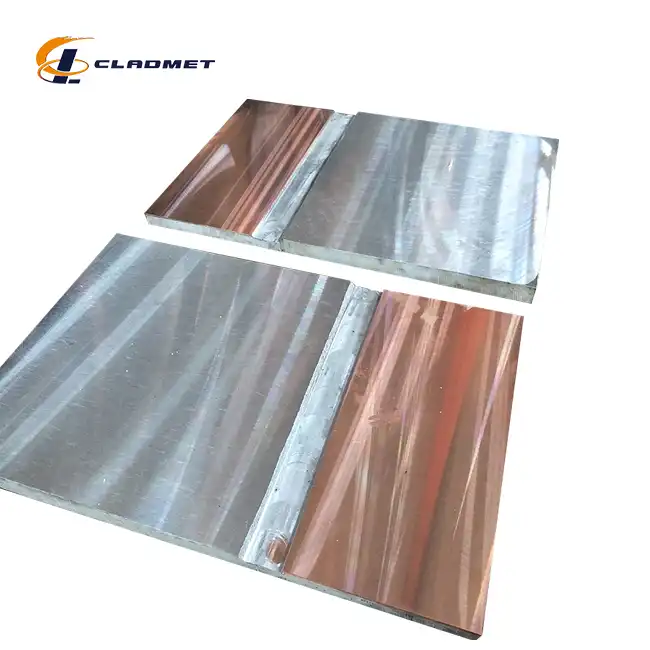
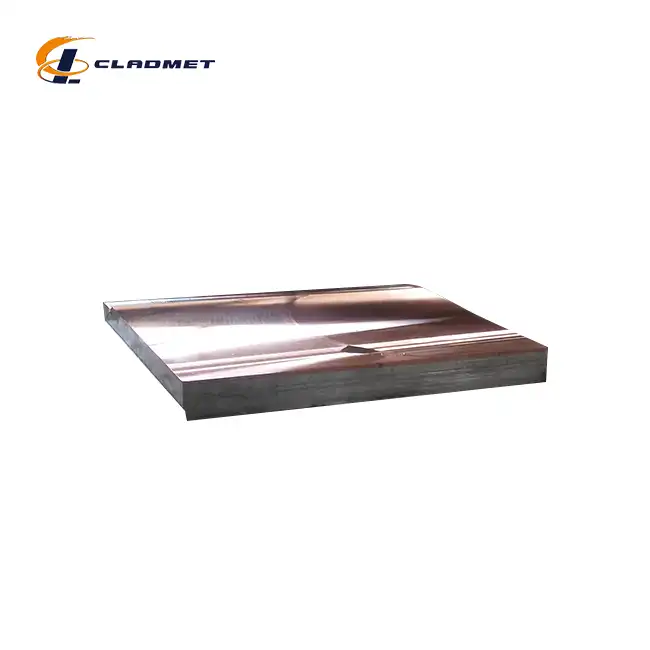
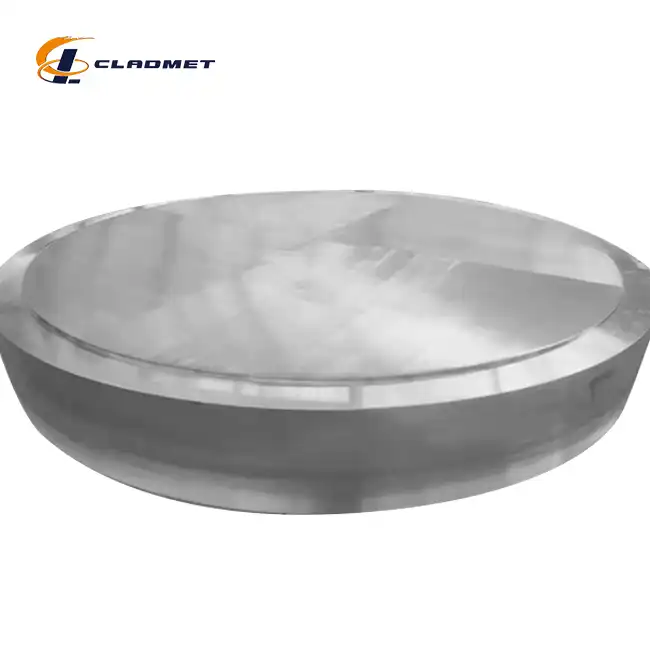






_1737611764680.webp)
